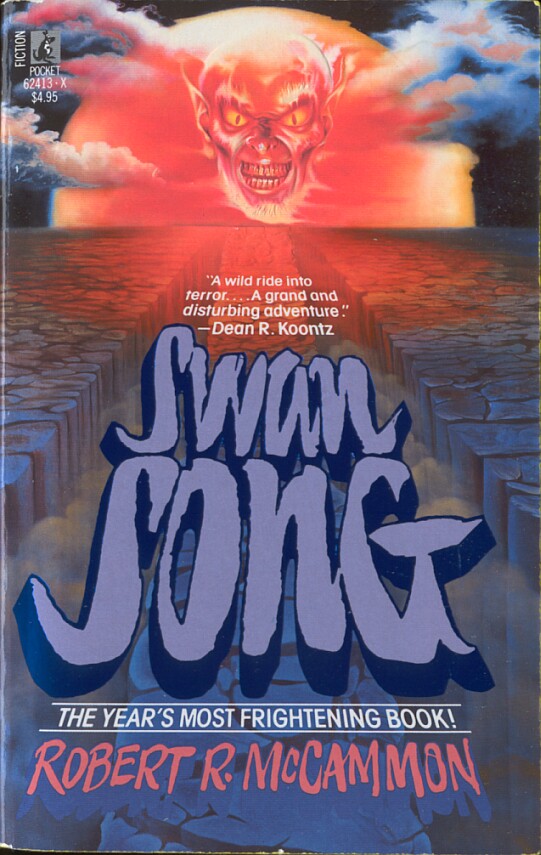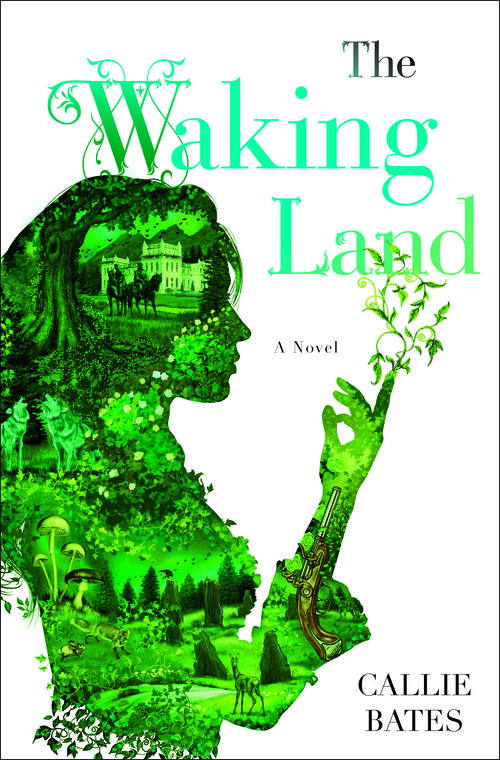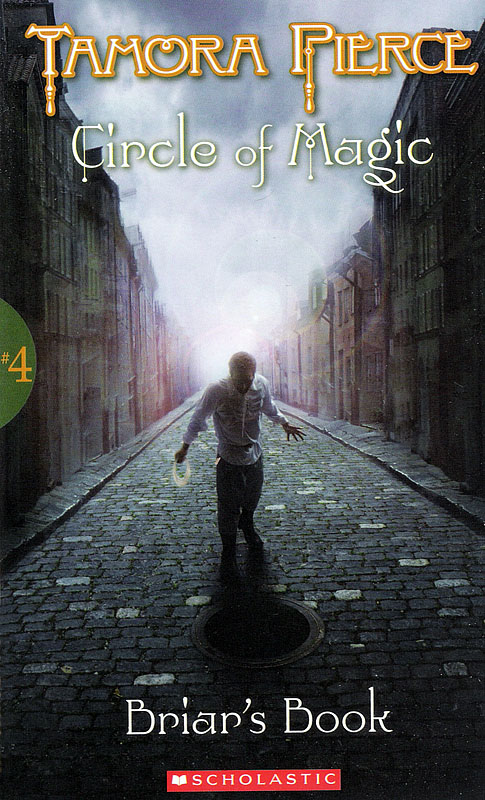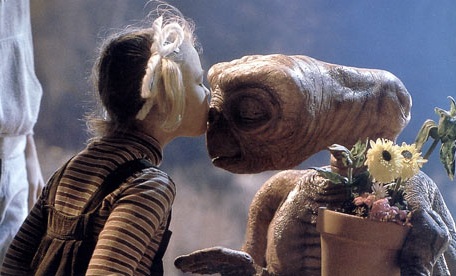It’s March! It may be two more weeks before we can work in our yards, and there may be snow in the East, but let’s talk about growing things. Because spring. We all need something to look forward to. Reading stories about people with green thumbs, and the business of magically growing things, ought to help usher in that necessary feeling of rejuvenation that a lot of us just aren’t getting right now, and give us some motivation to get through the next few weeks of rain and snow. So, before I descend into plant puns — aloe aloe! this post is just mint to be! — I present to you stories and characters about greenery, magic, and springtime.
 Swan Song, Robert R. McCammon (1987). It’s difficult to encapsulate everything that goes on in the nearly 1000-page Swan Song in a single paragraph, but just know that if you haven’t read it yet, you should. In this Bram Stoker-award-winning, post-nuclear narrative, a group of survivors — Josh Hutchins, former pro wrestler, a homeless seer named Sister Creep, and others — band together to protect a young girl named Swan from The Man of Many Faces and his “Army of Excellence,” a group of survivalists led by the sadistic Roland Croninger and Colonel Macklin who covet Swan’s mystical powers, which hold the key to rejuvenating life on Earth. Yes, “The Man of Many Faces” is the devil; Swan Song is often compared to Stephen King’s The Stand. But it’s my opinion that McCammon’s sweeping seven-year-long epic, while starkly bleak and cruel in the beginning, is ultimately full of a hell of a lot more sweetness and optimism than your “average” post-apocalyptic story, including The Stand. That’s not an easy feat. Neither is this one: McCammon’s villains are not cookie-cutter caricatures; Roland, Macklin, and the rest of the Army of Excellence are definitely, damnably evil, but they are not given cheesy lines or portrayed as overly dramatic for the sake of the plot. Overall, Swan Song is an update of the Johnny Appleseed tale, and it’s nothing short of amazing. (I freaking love this cover, by the way.)
Swan Song, Robert R. McCammon (1987). It’s difficult to encapsulate everything that goes on in the nearly 1000-page Swan Song in a single paragraph, but just know that if you haven’t read it yet, you should. In this Bram Stoker-award-winning, post-nuclear narrative, a group of survivors — Josh Hutchins, former pro wrestler, a homeless seer named Sister Creep, and others — band together to protect a young girl named Swan from The Man of Many Faces and his “Army of Excellence,” a group of survivalists led by the sadistic Roland Croninger and Colonel Macklin who covet Swan’s mystical powers, which hold the key to rejuvenating life on Earth. Yes, “The Man of Many Faces” is the devil; Swan Song is often compared to Stephen King’s The Stand. But it’s my opinion that McCammon’s sweeping seven-year-long epic, while starkly bleak and cruel in the beginning, is ultimately full of a hell of a lot more sweetness and optimism than your “average” post-apocalyptic story, including The Stand. That’s not an easy feat. Neither is this one: McCammon’s villains are not cookie-cutter caricatures; Roland, Macklin, and the rest of the Army of Excellence are definitely, damnably evil, but they are not given cheesy lines or portrayed as overly dramatic for the sake of the plot. Overall, Swan Song is an update of the Johnny Appleseed tale, and it’s nothing short of amazing. (I freaking love this cover, by the way.)
 The Waking Land, Callie Bates (2017). Elanna Valtai has grown up in King Antoine’s castle in the land of Eren, as punishment for her Caerisian father’s failed rebellion fourteen years ago. She represses an innate ability to make plants and flowers grow — it’s best not to even think of it, because Eren’s inhabitants disavow magic of any kind. Antoine’s people will kill her. But she can’t help channeling it into her work as an apprentice to the royal botanist. She thinks of Antoine as a father — until she is framed for poisoning him. Suddenly Elanna finds herself a pawn — kidnapped back to her homeland, her traitorous father intends to install her as the figurehead to a new rebellion by announcing her as the reincarnation of Wildegarde, an ancient sorceress. The plot will not necessarily surprise anyone who consistently reads fantasy, and the middle lags a lot, I won’t lie, but the attention to worldbuilding and character development makes this a good read. Elanna is clearly devastated, not just by King Antoine’s death, but what she learns about him, which ultimately influences her direction, resulting in a satisfying magical confrontation. First in a trilogy; continues in the forthcoming A Memory of Fire (June 2018).
The Waking Land, Callie Bates (2017). Elanna Valtai has grown up in King Antoine’s castle in the land of Eren, as punishment for her Caerisian father’s failed rebellion fourteen years ago. She represses an innate ability to make plants and flowers grow — it’s best not to even think of it, because Eren’s inhabitants disavow magic of any kind. Antoine’s people will kill her. But she can’t help channeling it into her work as an apprentice to the royal botanist. She thinks of Antoine as a father — until she is framed for poisoning him. Suddenly Elanna finds herself a pawn — kidnapped back to her homeland, her traitorous father intends to install her as the figurehead to a new rebellion by announcing her as the reincarnation of Wildegarde, an ancient sorceress. The plot will not necessarily surprise anyone who consistently reads fantasy, and the middle lags a lot, I won’t lie, but the attention to worldbuilding and character development makes this a good read. Elanna is clearly devastated, not just by King Antoine’s death, but what she learns about him, which ultimately influences her direction, resulting in a satisfying magical confrontation. First in a trilogy; continues in the forthcoming A Memory of Fire (June 2018).
 The Healing in the Vine, Tamora Pierce (1999). Number 4 in Pierce’s “Circle of Magic” books, this was first published as “Briar’s Book.” The Circle of Magic universe starts with The Magic in the Weaving (“Sandry’s Book”) and all stories follow the trials and adventures of four misfits with the powers to control aspects of earth, wind, and fire as they attend a magic academy at the Winding Circle Temple in the city of Summersea. Briar, a former street thief who is now learning plant magic at the Temple, still hangs out with his old friends, and when one of them falls ill with a mysterious new sickness, Briar must rely on his Temple friends to stop a plague in its tracks before the entire city is overcome. Briar reappears in Magic Steps, number 2 in Pierce’s followup “The Circle Opens” series, which follows the four graduates striking out on their own. Yeah, they’re middle-grade or YA, and yeah, I read them anyway, because Tamora Pierce always delivers such a unique blend of magic, camaraderie, science and wonder.
The Healing in the Vine, Tamora Pierce (1999). Number 4 in Pierce’s “Circle of Magic” books, this was first published as “Briar’s Book.” The Circle of Magic universe starts with The Magic in the Weaving (“Sandry’s Book”) and all stories follow the trials and adventures of four misfits with the powers to control aspects of earth, wind, and fire as they attend a magic academy at the Winding Circle Temple in the city of Summersea. Briar, a former street thief who is now learning plant magic at the Temple, still hangs out with his old friends, and when one of them falls ill with a mysterious new sickness, Briar must rely on his Temple friends to stop a plague in its tracks before the entire city is overcome. Briar reappears in Magic Steps, number 2 in Pierce’s followup “The Circle Opens” series, which follows the four graduates striking out on their own. Yeah, they’re middle-grade or YA, and yeah, I read them anyway, because Tamora Pierce always delivers such a unique blend of magic, camaraderie, science and wonder.
Those are stories about green thumbs, but I’m also listing my favorite green thumb characters.
E.T. the Extraterrestrial — Everyone’s favorite alien botanist revives plants just by thinking about them. ‘Nuff said.
Groot (Marvel) — Probably best known from Guardians of the Galaxy, but Groot as his essence is an alien tree, a member of the intergalactic species flora colossus, who, when introduced, was intent on capturing humans for study. Not quite the Groot we know from the film franchise! Groot isn’t just a plant of course; he can grow whatever he needs, from seeds to twigs to vines. Groot, Swamp Thing, and Zhaan probably deserve their own “plant-based people” post.
Poison Ivy (DC) — Poison Ivy did not have an origin when she was introduced in the 1960s, but Neil Gaiman gave her one in the 1980s Secret Origins comics in which she is seduced by her mad scientist botany professor, Dr. Jason Woodrue, who experiments on her. (Come on, even Gaiman has to admit this sucks.) She survives, consequently developing the abilities to exude pheromones and manipulate plant growth. Poison Ivy is a “black widow” type of villain — she can kill with a kiss — but as an environmental protector her aims often align with those of Swamp Thing. And as best friend (Editor’s note: and girlfriend!) to Harley Quinn, she often tries to get Harley to see how bad the Joker really is for her (characters suffering from Stockholm Syndrome might be a future Chain Reaction post).
Klara Prast (Marvel) — I’m kinda done with Joss Whedon touting himself as a feminist, and here’s a piece of evidence (if I needed any more of it, anyway). Klara’s backstory is as problematic as Poison Ivy’s; Whedon’s addition to Brian K. Vaughan’s Runaways introduced a twelve-year-old girl who was forced by her family to marry a middle-aged man. Barf. All kinds of barf. Klara falls in with the Runaways when the group lands in the year 1907; when they return to 2007, they bring Klara with them, even though Klara is not totally cool with Karolina and Xavin’s relationship. Klara is able to speak to plants and thus escaped a horrific sweatshop fire. Her ability is explained as chlorokinesis—the mental ability to make plants grow.
Do you have a favorite Green Thumb story or character? Tell me what I missed and keep the chain going in the comments below!

I’ve never heard of Swan Song, but it sounds like something I would like. I did love The Stand, although I don’t think I’ve read it since high school. I’ve picked up (and put down) The Walking Land several times in the book store because I love the cover, but if it’s not 100% great, I’m not paying for it. Library for the win.